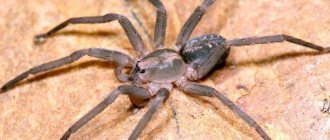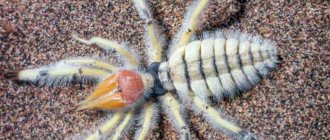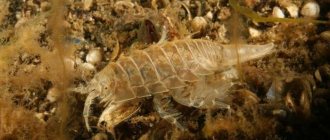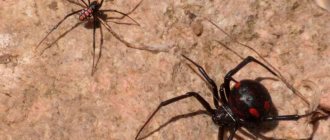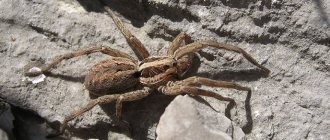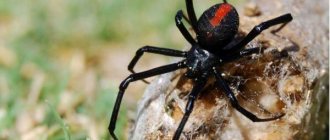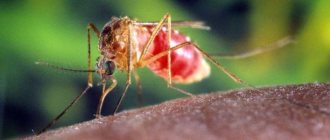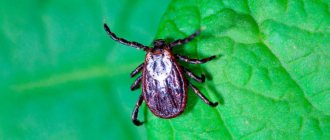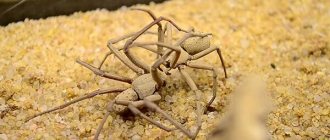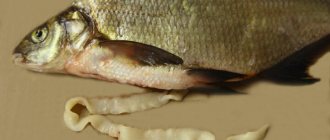- Wild animals
- >>
- Arachnids
Banana spider , or as it is also called, the golden spider, or the wandering soldad spider, is a poisonous spider.
In 2021, it even entered the Guinness Book of Records due to the strong toxicity of its poison. Modern medicine has made great strides, thanks to which doctors have learned to make an antidote. This helps reduce the number of deaths after an arthropod bite. The spider is called a banana spider because it is often found under the skin of the fruit, or inside a bunch of bananas. Thus, it spreads almost throughout the world and poses a great danger.
Origin of the species and description
Photo: Banana spider
The banana spider belongs to the arthropod arachnids, classified in the order Spiders, family Nephilidae, genus Nephila.
Spiders are unique representatives of flora and fauna. Only they tend to weave webs and have 8 legs. These features prompted ancient scientists to believe that these creatures did not originate on Earth, but came here from a completely different planet. However, the subsequently found remains of the ancient ancestors of modern spiders made it possible to refute this theory.
Modern scientists still cannot determine the exact period of appearance of spiders on earth. This is due to the fact that the chitinous shell of arachnids is destroyed quite quickly. The exception is the few remains of the ancient ancestors of modern arachnids, which have survived to this day thanks to amber or pieces of frozen resin.
Video: Banana Spider
According to a few finds, scientists were able to name the approximate period of the appearance of arachnids - it is approximately 200-250 million years ago. The very first spiders looked very different from modern representatives of this species. They had very small body sizes and a tail section, which was designed for weaving webs. The process of formation of sticky threads was most likely involuntary. The threads were not used to weave webs, but to line their burrows and preserve cocoons.
Scientists call Gondwana the birthplace of arachnids. With the advent of Pangea, the arachnids that existed at that time quickly spread across various regions of the earth. The subsequent ice ages significantly narrowed the habitat regions of arachnids on earth.
For the first time, the features of the life activity and appearance of the banana spider were described by the German researcher Maximilian Perti in 1833. He gave him a name, which, translated from Greek, was interpreted as “killer.”
Danger to humans
The toxins contained in the venom of the Brazilian wandering spider have almost 150 compounds and are still poorly understood. The most powerful neurotoxin PhTx3 causes instant symptoms of body poisoning:
- unbearable pain at the site of the bite;
- dizziness;
- a sharp increase or decrease in blood pressure;
- increased or slow heart rate;
- decrease in body temperature to 35 °C;
- nausea;
- priapism occurs in men;
- blurred vision and hallucinations.
Emergency help
If qualified medical assistance is not provided in a short time, numbness of the arms and legs, spasms, paralysis of the respiratory muscles and death from suffocation or cardiac arrest begins. The bite of a poisonous banana spider has a particularly strong effect on children, the elderly and people with reduced immunity. Even with a doctor nearby, it is not always possible to save them.
Attention! With the invention of the antidote, the number of deaths has decreased markedly, but help must be provided within an hour.
You need to know that this arthropod rarely stops with one bite unless the person backs down. The animal will not run away, but will defend itself to the end. Moreover, if the first time a banana spider often scares, using the so-called “dry” bite, then the subsequent one is always dangerous, since it will definitely be poisonous.
Since this animal does not consider a person as prey, it will not attack without reason. All known bites were inflicted when the spider felt threatened and tried to defend itself.
Appearance and features
Photo: Banana spider in America
The appearance of banana spiders does not have any specific features or distinctive features. It can easily be confused with any other spider. This type of spider has quite pronounced sexual dimorphism - females are almost twice as large as males in size and body weight.
Distinctive features of the appearance of wandering soldiers:
- body dimensions – 1.5-4.5 centimeters;
- long limbs, the size of which in some individuals reaches up to 15 centimeters. The chelicerae in most individuals are brown or dark red. This scares off other predators who want to hunt spiders. The other limbs have transverse rings that are darker in color;
- the body is represented by two sections: the convex abdomen and the cephalothorax;
- the body is covered with thick, stiff hairs;
- the color is dark gray, close to black. Some individuals have a dark red or burgundy color;
- The color of an arthropod depends on the region and living conditions, since the color of the body serves as a camouflage function;
- a dark stripe runs along the body.
Long limbs are a distinctive feature of the banana spider. They are used not only as a means of transportation, but also as organs of touch and smell. They contain many hypersensitive receptors. There are 8 pairs of visual organs on the head. Thanks to so many organs of vision, they are provided with a 360-degree view. They can clearly distinguish not only clear pictures, but also shadows and individual silhouettes. Banana spiders have an excellent, instant reaction to movement.
Interesting fact: A distinctive feature of a wandering soldier is considered to be a pose that is characteristic only of him. When attacked, he stands on his hind legs, lifts up and straightens his front legs. In this position, he is ready for a lightning attack and injection of highly toxic poison.
Description and behavior of the Banana Spider
What characteristics does the brachypelma tarantula spider have?
The banana spider has a body length from 17 to 45 millimeters. Its limbs are between 13 and 15 centimeters long. The Brazilian wandering spider can be quite easily confused with some other spider genera, such as the genus Ctenus. It can be distinguished by the presence of dense hair on the pedipalps. Although this difference cannot be considered very significant, it should still be indicated as a distinctive feature. Another way to identify a banana spider can be a black line running along the entire length of the arthropod’s body from the head. But this feature is not the most important difference from other spiders. The most important indicator of the Banana Spider can be considered its behavior, because when a threat arises, it takes a special defensive pose. The defensive posture of the Brazilian wandering spider consists of highly raised forelimbs, and it is this defensive reaction that allows this species to be identified. Phoneutria nigriventer contains the most dangerous neurotoxin PhTx3 in its venom. Depending on the dosage, it is widely used in medicine, but if the toxicity limit is exceeded, it is very dangerous. The venom causes loss of muscle control, resulting in suffocation or cardiac arrest. Another characteristic symptom of a banana spider bite is preapism. The bite of the Brazilian wandering spider is quite painful. It is known that females produce much more powerful poison than males. So that you understand the danger of this species, in order to kill a mouse weighing 20 grams you need 6 micrograms of poison. There is an antidote for the venom of the banana spider, which is very effective for its bites. As a result, the number of deaths has dropped to a minimum.
Walking through the favelas (the so-called slums) of Rio de Janeiro at night is suicide! There are creatures here with whom you will be very uncomfortable. Look at this creature - this is an ominous Brazilian travel spider and it is not to be trifled with.
These spiders are very aggressive. When in danger, spiders raise their legs, exposing their fangs - this warning should be taken seriously. It is known to be one of the most poisonous spiders in the world. Its bite can be fatal, but its venom also has a strange effect on the human genital area.
Please note that this spider has been able to cause this effect for millions of years, and people have only recently developed drugs that cause a similar reaction. This spider successfully changed its habitat, moving from the jungle to the city and, it seems, has no plans to leave Rio any time soon
This spider has successfully changed its habitat, moving from the jungle to the city, and it doesn't look like it's going to leave Rio anytime soon.
Where does the banana spider live?
Photo: Banana spider in bananas
The largest number of banana spiders is concentrated in South America. However, the banana spider can also be found in other regions.
Geographical regions of the wandering soldier's habitat:
- Costa Rica;
- Argentina;
- Colombia;
- Venezuela;
- Ecuador;
- Bolivia;
- Australia;
- Madagascar;
- Brazil;
- Paraguay;
- Panama.
The exception is the northeastern region of the South American region. Often found as a habitat in equatorial rainforests. The leaves of various plants, stuck together, provide a cozy and safe refuge for arachnids. This is how insects get onto banana trees, and along with the leaves, onto fruit bunches. A sign of their presence is considered to be white mold or cobwebs, as well as dark tubercles under the skin of the fruit.
Interesting fact: In the body of banana spiders, unlike other types of spiders, there are not one, but seven such glands. Each of them performs its own function. There is a gland responsible for protecting cocoons, or fixing the victim, as well as glands designed to form a strong web.
In Russia, spiders are practically not found in natural conditions. They are often kept as pets. It is unusual for spiders to occupy burrows; they lead a nomadic lifestyle and can hide under stones and snags. In the process of moving, spiders often climb into human homes. Traveling soldiers do not tolerate extreme heat well, trying to hide in secluded corners, which poses a great danger to the people living in the house.
Now you know where the banana spider lives. Let's see what he eats.
Is the banana spider a new epidemic in Russia?
Death in furry paws: Brazilian soldier spider
An urgent warning was issued for German supermarkets on Wednesday evening. It concerns the possibility of the presence of cocoons of poisonous Brazilian spiders in bananas supplied from Brazil. Police and firefighters closed the Globus supermarket in Simmern after a customer discovered several spider cocoons on bananas in the fruit section.
I hasten to share some news that I didn’t attach any importance to at first - about some small spiders in bananas. Well, spiders, well, bananas are not very fresh, that’s why there are spiders. I don't take stale bananas.
But then they said that they are very dangerous, they can hide both inside a banana and in fruit packaging, and you can even die from their bite. So now I’m a little afraid to approach the fruit rows.
It’s good that I managed to buy grapes yesterday.
The incident with the spider occurred on Friday, July 8th.
On the same day, the store staff reported the fugitive to the pest control department, whose employees decided to evacuate the supermarket visitors and close the retail space while searching for the spider.
Banana spider in Russia. Reality or myth? Is it possible for banana spiders to appear in our Russian supermarkets? Or are these all Western horror stories? Why do they show videos on our TV that spiders were seen somewhere in Brazil, England, Germany? Can the NTV channel and such information be trusted?
We all buy bananas in stores, not even suspecting that there may be mortal danger lurking next to them.
Children under 10 years of age most often become victims of the insect. The antidote is common in Brazil, but is extremely difficult to find in Europe. The bite is fatal!
banana spiderRussia0Complain—>ReplyGood question? Like it! 0More likes - more replies! Share the question with your friends: Znaychik For every answer - thank you very much, +1 to the rating and +100500 to karma! =)Answers to the question: 0 Reply Attention! You can leave a reply without registering. After moderation, the answer will be available on the page. To do this, write the answer below and click reply
Moderation time is up to 10 minutes.
More details: aznaetelivy.ru
1 What it looks like2 Where it lives3 Lifestyle4 Reproduction5 Danger to humans Brazilian banana spider Brazilian banana spiderThe banana spider (lat. banana spiders) is a large representative of the arachnid family.
The largest species live in tropical countries - Africa, America, Australia, Asia, Madagascar. They belong to the nephilus orb weaver family. They weave the largest, strongest web, up to 2 m in diameter. Trap nets can even withstand birds, rodents, and snakes.
In fact, we Russians didn’t care about this spider, whether it lives there in Brazil, or in the north of Argentina, that’s what we care about. You can also find them in Uruguay, but this is all far from us in any case. In general, we really didn’t know anything about him. And interest in it flared up after it was discovered in bananas bought in a supermarket by a Brazilian family.
More details: otzovichok24.ru
For some reason, the man got it into his head that he was the king of the whole world. That there is no creature on this planet stronger and more dangerous than him. But, alas, the reality is that there are creatures that can seriously shake his faith in himself. For example, the Brazilian wandering spider Phoneutria, or the banana spider.
I hasten to share some news that I didn’t attach any importance to at first - about some small spiders in bananas. Well, spiders, well, bananas are not very fresh, that’s why there are spiders. I don't take stale bananas.
But then they said that they are very dangerous, they can hide both inside a banana and in fruit packaging, and you can even die from their bite. So now I’m a little afraid to approach the fruit rows.
It’s good that I managed to buy grapes yesterday.
An ordinary English family in the Hamtons was forced to flee their home when they saw Brazilian deadly spiders on bananas bought in a store. In a matter of minutes, dangerous arthropods took over the entire house. In Kazan, a “special forces soldier” was detained who, in front of his young son and passers-by, beat an autistic teenager.
Spiders - few people have pleasant associations with them. These are not insects, but animals that belong to the phylum arthropods and the class of arachnids. Despite their size, behavior and appearance, they all have almost the same body structure. Such individuals are found almost everywhere and can even live in water. Spiders can often be found in the vast expanses of Russia.
A woman who bought a bunch of bananas at the supermarket was shocked to find the eggs of the world's deadliest spider on them.
Abbey Woodgate, 30, was advised by pest control experts to burn anything that came into contact with the eggs of the extremely poisonous Brazilian wandering spider.
What does a banana spider eat?
Photo: Banana spider
Wandering soldiers are rightfully considered omnivorous insects. They feed on everything they can catch in their fishing nets. They also do not disdain food of plant origin - bananas, or the fruits of other fruit trees.
What serves as food supply:
- beetles;
- midges;
- locusts;
- caterpillars;
- insects;
- other, smaller arachnids;
- lizards;
- various types of amphibians;
- various types of small birds;
- snakes;
- rodents.
Spiders use a variety of means to obtain a food source. They can weave incredibly strong trapping nets, with the help of which they provide themselves with food.
Interesting fact: In some cases, the size of the poutine can reach 2 meters! It is incredibly durable, as it is capable of holding a bird, small lizard or snake caught in it.
Spiders can also hunt prey of their choice. They choose a potential victim, overtake it in the blink of an eye, stand on their hind legs and attack, spraying deadly poison. Under the influence of the poison, the victim is paralyzed and its insides are digested and melted. After some time, the spiders simply drink the internal contents of their prey.
The venom of banana spiders is considered very highly toxic. To kill an average-sized mouse, they only need 6 micrograms of poisonous secretion. However, having caught the next victim in her strong web, the female spider is in no hurry to kill her. The prey is paralyzed by injecting poison and wrapped in a cocoon of spider webs. After this, it is suspended while still alive. This way the loot can be stored for some time.
The Brazilian wandering spider is the most dangerous spider in the world
Let's talk about the Brazilian spider. It is one of the top most dangerous insects on the planet. The word wandering is added to its name and for good reason. This spider, unlike the others, does not weave a web, but is on a constant journey, that is, it wanders.
You can only meet him in America, where he lives not only in the tropics, but can often be a resident of houses and outbuildings. Why is it special and what threat does it pose to humans?
Features of the view
The assassin spider (phoneutria) is a very fast and aggressive representative of its genus.
The Brazilian has two types: jumping and running, but they are all equally poisonous. What does he look like?
Spider appearance
An individual of this type of spider is very large, sometimes its dimensions reach 10 cm in length. The size of the head and chest are small, in contrast to its belly, which is very thick, since the spider feeds a lot.
The legs are very massive, covered with hair, which makes it look most menacing. Color changes depending on the habitat. Sometimes it can be dark brown, sometimes with the addition of green specks, or brown with reddish hues.
Another feature by which you can easily determine that this particular spider is in front of you is its method of protection, which also determines its type. When threatened by the environment, he takes a very interesting position, stands on his hind legs and raises his front legs up. During such a ritual, he swings from side to side, his chelicerae (jaw apparatus) become crimson-red.
Reproduction and life cycle
It is often found in nature that female insects are larger than the male, and this is also the case with spiders. After mating, the female can eat the male, but some species live in families, in one nest, and since the Brazilian constantly wanders, it sometimes happens that the male spider ends up being the victim.
In adult representatives, the mating dance looks very interesting. The male offers the caught food to the female, who cannot resist and freezes. At this time, mating occurs.
See the topic - How and why a spider weaves its web
After a few weeks, the female lays eggs in a cocoon and guards it until young nymphs emerge, who then independently disperse throughout the tropics and wander in search of food in order to grow to large sizes.
Diet
During constant movement, the spider looks for prey, which can be insects, small spiders, and even attacks tropical frogs, birds and lizards.
The arthropod received its name “banana” for its special passion for fruits. Because of this, the spider can often be found in boxes of bananas prepared for export. Thus, it can be imported into another country.
But the basis of the diet is still meat. Once inside, the poison turns the insides into a broth, which is subsequently sucked out by the insect.
Lifestyle
The soldier spider, so called for the way it raises its front legs up, is a nocturnal resident, that is, during the daytime it hides in a cool place. Such a place could be a snag or a stone (on the ground). Having seen its prey, the spider makes itself known with lightning speed. At night the insect wanders.
When attacking small animals, it sinks its jaws and injects poison into the body, which paralyzes the animal in a couple of seconds. If an insect manages to enter the house, it immediately hides.
Its storage can be shoes, clothes, hats. And therefore, people may suffer due to their illiteracy, that is, not checking items of clothing before putting them on.
Habitat
Its habitat is the tropics and subtropics of South America. They prefer a terrestrial location, but often climb tree trunks and hide in thick, damp foliage.
In Russia, such a representative of wildlife has not been recorded, but you still should not be careful. There is a replacement for him, which is not inferior in danger - this is a black widow.
Black Widow
Danger to humans
The poison of the Brazilian representative of arthropods poses a mortal danger to humans.
It contains a neurotoxin that, when released into the human bloodstream, causes the following symptoms:
- dizziness;
- increased blood pressure;
- increased body temperature and fever;
- attacks of suffocation followed by respiratory arrest;
- numbness of the limbs;
- complete atrophy of muscle mass.
The poison is most dangerous for males, the reasons for this are unclear. They experience a painful erection that lasts for a long time.
If you manage to meet a banana spider, then having bitten once, it does not try to escape, but strives to do it again. Once in the child's blood, the neurotoxin causes a severe allergic reaction, in which in some cases the child cannot be saved, even without being taken to the nearest emergency room.
And since South American countries are not very rich in experienced medical workers, and some settlements do not see them at all, an antidote that is not administered on time takes a person’s life.
Important! The insect does not attack the victim on its own. This happens in the case of self-defense. For example, if you put on a shoe that has a spider in it and thereby crush it, then it is not surprising that it will bite you. Therefore, caution is needed here.
An interesting fact from a traveling American who describes the symptoms of a spider bite. The incident occurred in 1998. While sorting bananas into boxes, he was accidentally bitten by a soldier spider. It looked like this: as if a long, sharp dagger had been stuck into my hand.
My hand immediately swelled and my head began to spin. His heartbeat increased to such an extent that he felt like it would burst out. My breathing stopped and spasms appeared. The doctors were in the right place and on time, they injected him with an antidote, which caused the American to get back on his feet the very next day.
Time from bite to death
This concept is very vague, since it is impossible to define this period of time with the same name, it all depends on the resistance of the human body and the immune system.
Video: Spider Danger
If you believe the stories of travelers, this time can be 30 minutes if the bite occurs on a small child. And a little longer if an adult was bitten. Not every time there is a doctor nearby with an antidote, so an encounter with a spider can end tragically.
Lethal dose of poison
It is believed that one bite and an injected portion of a toxic substance is enough to cause death. During a bite, a person may not feel the injection of poison, but after a second the skin begins to burn, the poison enters the lymph and blood. In 80% of cases, you are guaranteed to go into cardiac arrest.
If you determine the amount of poison that is needed to kill your victim, then it is as follows: for a small rodent, 6 mcg directly into the blood is enough and a little more, about 130 mcg under the skin. You can calculate the dose for humans, given that the average weight of a rodent is about 50 grams.
Antidote
Today, medical scientists have nevertheless developed an antidote against the venom of the Brazilian wandering insect.
Obtaining it is a very difficult process, but still it helps many. Due to the presence of antivenom, mortality from bites is reduced. According to statistics, it is 3%.
Conclusion
To summarize the whole story, we note that the spider causes danger if it itself senses danger from the environment, but it itself will not attack first. This must be remembered whenever you encounter an arthropod, be it a Brazilian spider or another poisonous spider.
But there are real extreme sports enthusiasts in exotic breeding. And the Brazilian spider is their favorite pet, which is kept in glass terrariums.
Video: Brazilian Wandering Spider
Features of character and lifestyle
Photo: Banana spider in nature
Spiders spend most of their time on the web they weave. It can be located in residential buildings or non-residential premises. They prefer to hunt in the dark. It is during this period that their web casts silver reflections that attract potential victims. Banana spiders are unique web-weavers. Special glands in their body synthesize a specific liquid, which, when muscle fibers contract, turns into a web.
Weaving webs is done exclusively by females. Males exist only to procreate. Males feed on the remains of the female's prey. Banana spiders differ from their relatives in their speed of movement and lightning-fast reaction. Spiders are not afraid to attack even those representatives of the local flora and fauna that surpass them in size, strength and power. Most often, in a seemingly unequal fight, spiders manage to win, as they instantly inject their highly toxic poison. Science knows of cases where spiders managed to defeat an adult rat.
Spiders do not tend to lead a sedentary lifestyle. They constantly wander, for which they received their second name. They often have to travel long distances. Spiders have the ability not only to run very fast, but also to jump quite high. The greatest activity is observed at night. During the day, spiders hide in the foliage, on the branches of bushes and trees near the web they weave. The hairs, or bristles, which are located on the limbs, allow them to respond to the slightest vibrations and movements of the spider threads.
Population and species status
Photo: Dangerous Brazilian wandering spider
The Brazilian wandering spider is listed in the Guinness Book of Records as the most dangerous spider on planet earth. This type of spider is very dangerous for humans, and sometimes spiders enter people’s homes. Insects can often enter the house in boxes of fruit or simply crawl in hiding from the midday heat. When bitten, these spiders inject a dangerous substance, the neurotoxin PhTx3. It blocks muscle function. Breathing slows and stops, and cardiac activity is blocked. The person quickly becomes ill.
After a bite, the dangerous poison very quickly penetrates the blood and lymph nodes. The blood carries it throughout the body. The person begins to choke, dizziness and vomiting appear. Cramps. Death occurs within a few hours. Bites from Brazilian wandering spiders are especially dangerous for children and people with low immunity. If you are bitten by a Brazilian wandering spider, you must immediately administer an antidote, although it does not always help.
The population of this genus of spiders is not threatened. They reproduce quickly and survive changes in the external environment well. As for other species of this genus, they live quietly and reproduce, flooding the forests and jungles of Brazil, America and Peru. Phoneutria fera and Phoneutria nigriventer are the two most dangerous species. Their poison is the most toxic. After their bites, painful conditions are observed in their victims due to the high content of serotonin. The bite provokes hallucinations, shortness of breath, and delirium.
Therefore, when visiting tropical countries, be extremely vigilant; when you see this arthropod, under no circumstances approach it or touch it with your hands. Brazilian spiders do not attack humans, but upon noticing danger and saving, they can bite their own lives. In America, there are many cases of people being bitten by Brazilian spiders, and unfortunately in 60% of cases the bites were fatal. Modern medicine has an effective antidote, but unfortunately, the doctor is not always able to get to the patient in time. Young children are especially susceptible to bites from these arthropods, and they are the most dangerous for them. Often children cannot be saved after being bitten by a wandering spider.
The Brazilian wandering spider is a dangerous but calm animal. It reproduces quickly, lives for about three years and is capable of giving birth to several hundred cubs during its life. When living in their natural habitat, they obtain their food by hunting. Young spiders are not very dangerous, but adults, thanks to their poison, are deadly to humans. The danger of the poison depends on its quantity. In recent years, more and more people are keeping these dangerous spiders at home in terrariums, thereby endangering themselves and their loved ones. These spiders are dangerous, remember this and better avoid them.
Tags:
- Ctenidae
- Entelegynae
- Lycosoidea
- Neocribellatae
- Opisthothelae
- Panarthropoda
- Phoneutria
- Phoneutriinae
- Araneomorph spiders
- Bilaterally symmetrical
- Animals of America
- Animals of Argentina
- Animals of Brazil
- Animals of Venezuela
- Animals of Guyana
- Animals of the forest
- Animals starting with the letter B
- Animals starting with the letter P
- Animals starting with the letter C
- Animals of Peru
- Animals of North America
- Animals of the Subtropical Zone of the Northern Hemisphere
- Animals of the Subtropical Zone of the Southern Hemisphere
- Animals of the Subequatorial Belt of the Northern Hemisphere
- Animals of the Subequatorial Belt of the Southern Hemisphere
- Animals of the tropics
- Rainforest Animals
- Rainforest Animals
- Animals of the Tropical Zone of the Northern Hemisphere
- Animals of the Tropical Zone of the Southern Hemisphere
- Animals of Ecuador
- Animals of South America
- Shedding
- Dangerous animals
- Dangerous animals of the world
- Dangerous spiders
- Spiders
- Protostomes
- The most disgusting spiders
- The most dangerous animals
- The most dangerous animals in the world
- The most dangerous spiders
- The most terrible animals
- The most terrible animals in the world
- The most terrible spiders
- The most poisonous animals
- The most poisonous animals in the world
- Scary spiders
- Tropical animals
- Cheliceraceae
- Arthropods
- Eukaryotes
- Eumetazoans
- Poisonous animals
- Poisonous spiders
Social structure and reproduction
Photo: Banana spider
Males are much smaller than females in size and weight. Before mating, they tend to attract the attention of a potential partner with a peculiar dance and tap dancing with their limbs. After the mating process is completed, the egg laying period begins. The female wraps the laid eggs in a cocoon of cobwebs and hangs them with strong threads. Females zealously guard their cocoons until the spiderlings hatch from them. After 20-25 days from the moment they are placed in the cocoon, small spiders appear from the eggs.
The size of one cocoon is several centimeters. There may be several such cocoons. In total, one female can lay from one and a half to two hundred to several thousand eggs. The mating season of banana spiders most often begins in early April and lasts until the end of spring. After the mating process is completed, each male quickly runs away, since females often simply eat their partners after the completion of the mating season.
Spiders reach sexual maturity at the age of three. During the first 12 months of life, they can withstand up to a dozen molts. With age, the number of moults decreases, and the toxicity of the poison increases. The growth of spiders occurs during the molting period. The average lifespan of one spider in natural conditions is 3-5 years.
Population and species status
Photo: Banana spider
Despite the fact that the habitat of banana arthropods is small, their numbers are not currently threatened. Most often, these spiders live in the jungle, in which they have practically no enemies. These arthropods really pose a danger to people, and there are indeed cases of bites. If you encounter a spider and as a result a person is bitten, you must immediately seek qualified medical help.
Due to the fact that nothing threatens spiders, the legislation has not developed any special measures or programs aimed at preserving their numbers or increasing them. Despite the fact that the banana spider’s natural habitat region is considered to be South America, they are bred at home in various parts of the world. Breeders of rare, exotic and very specific representatives of flora and fauna should not forget about the constant danger. Before you get such a pet, you must carefully study the conditions and rules of keeping it.
Banana spiders are very common around the world in the fruit of the same name. From time to time, in various parts of the world, cases of their discovery in boxes or packages with bananas are recorded. Before consuming these fruits, you must carefully examine their outside for the presence of cobwebs or dark tubercles.
Tags:
- Araneoidea
- Entelegynae
- Neocribellatae
- Nephila
- Nephilidae
- Opisthothelae
- Panarthropoda
- Araneomorph spiders
- Bilaterally symmetrical
- Animals of Australia
- Animals of Australia and Oceania
- Animals of Argentina
- Animals of Africa
- Animals of Bolivia
- Animals of Brazil
- Animals of Venezuela
- Animals of the equatorial rain forests
- Animals of Guinea
- Animals of India
- Animals of Colombia
- Animals of Costa Rica
- Animals of the forest
- Animals of Madagascar
- Animals starting with the letter B
- Animals starting with the letter P
- Animals of New Guinea
- Animals of Panama
- Animals of Paraguay
- Animals of the Subequatorial Belt of the Northern Hemisphere
- Animals of the Subequatorial Belt of the Southern Hemisphere
- Animals USA
- Rainforest Animals
- Rainforest Animals
- Animals of the Tropical Zone of the Northern Hemisphere
- Animals of the Tropical Zone of the Southern Hemisphere
- Animals of Ecuador
- Animals of the Equatorial Belt
- Animals of South America
- Animals of Japan
- Shedding
- Dangerous animals of Australia
- Dangerous spiders
- Spiders
- Protostomes
- The most dangerous spiders
- The most terrible spiders
- Cheliceraceae
- Arthropods
- Eukaryotes
- Eumetazoans
- Poisonous spiders
Natural enemies of banana spiders
Photo: Banana spider in bananas
Despite the fact that banana spiders are considered one of the most dangerous and poisonous creatures on earth, they also have enemies.
Natural enemies of the spider:
- tarantula hawk wasp. is the largest wasp among all existing in the world. She does not tend to show aggression. It does not attack other insects, only spiders. Female wasps sting insects, paralyzing them with their toxic venom. After this, they lay eggs in the body of the arthropod and drag it to their lair. The death of the spider occurs after its entrails are eaten by the wasp larva hatched from the egg;
- some species of birds;
- some species of amphibians and reptiles that are found in the jungle;
- rodents.
Spiders most often die defending themselves from those who pose a potential threat to them. Spiders do not tend to flee when danger appears; more often they take a defensive position and defend themselves. Spiders are considered extremely aggressive and very dangerous. The only danger is from female wandering soldiers. Males are not capable of harming anyone, much less killing anyone.
Body size and structure
Banana spiders look terrifying - the body is from 1 to 4 centimeters, the paw span reaches 12 centimeters. The females that weave webs are of such enormous size; the males are several times smaller. The body is covered with small hard hairs, the color is gray, brown, almost black.
The female lays eggs in cocoons, which she attaches to the web in secluded places. Each female has up to a dozen cocoons with 10-50 eggs.
The legs of the Nephila spider are powerful and equipped with hooks. Females quickly weave a web, secreting a liquid secretion of different composition. The network in one row contains absolutely even cells, which increase in size in the rows farthest from the center.
If the trembling prey destroys the cocoon, the female quickly runs up and restores the net. The prey has no chance of escaping.
Reproduction
Brazilian wandering spiders are dioecious creatures. The color of the female is much brighter than the color of the male, but the size of the male individual exceeds the size of the female, and the males also have an additional pair of limbs (used during mating).
To attract the attention of his chosen one, the male performs a kind of dance, while simultaneously offering her the caught food.
After sexual intercourse, the female often eats her partner, and after a few weeks she lays eggs and guards them until the young emerge. After this, the female’s maternal mission is completed: the young individuals crawl along the paths in search of food.
